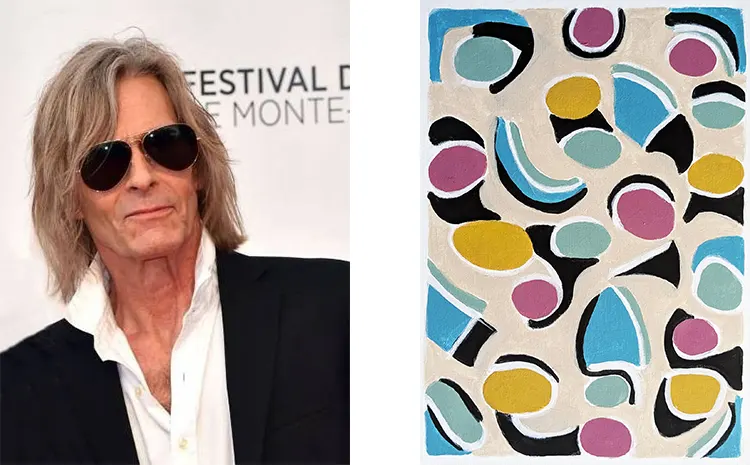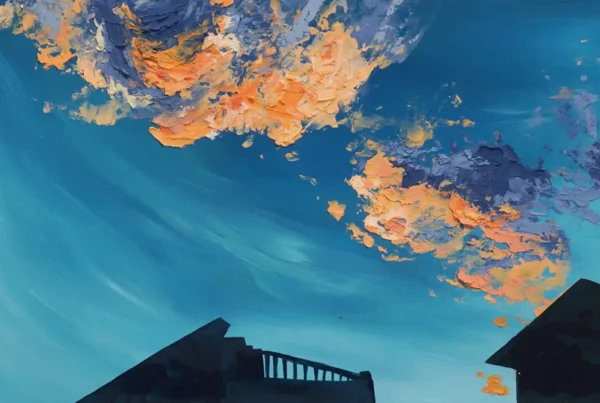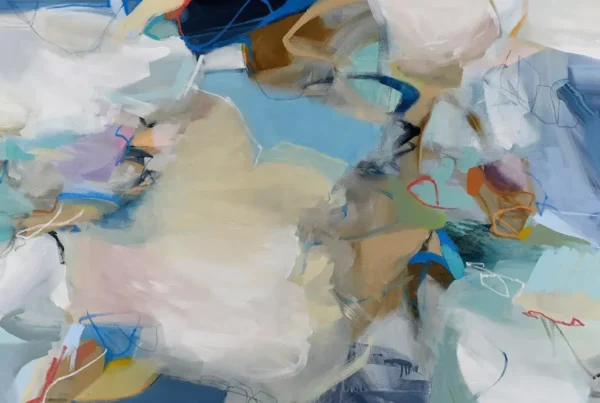Banner image: Quanta Dada #3: “The Hunt”
“In this era of crushing autocracy, global greed, and a world on the brink of destruction, I believe it is time for a new Dadaism which can shock us back to our senses. It is time for Quanta Dada.”
The Dawn of Quanta Dada
Ivan Suvanjieff‘s artistic journey is a testament to his profound connection with the world and its events. As he prepares for his upcoming solo exhibition, “Quanta Dada London,” at The Holy Art @ The Factory, opening on February 23, 2024, Suvanjieff reflects on the global turmoil that fuels his creativity. The “Quanta Dada” series is his artistic response to the world’s current state, mirroring the sentiments that birthed the original Dada movement in 1916. Influenced by the Dadaists, who used humor and absurdity as a weapon against the madness of World War I, Suvanjieff sees a parallel in today’s world. He believes in the rebirth of Dadaism, a movement to awaken society from its destructive path, characterized by rampant autocracy and global greed.
Suvanjieff’s passion for social activism and free expression is evident in his diverse body of work. This commitment spans across multiple mediums, from his days as the lead singer of punk rock bands The Ramods and The 27 to his role as associate editor of CREEM magazine. His literary pursuits include contributing to “The Stooges: The Authorized Story” and publishing over 50 issues of “The New Censorship: Monthly Journal of the Next Savage State.” Suvanjieff also extends his influence into the film industry, with his recent film, “Shirin Ebadi: Until We Are Free,” broadcasted on BBC. This diversity in expression is not just a career choice but a reflection of his deep-rooted belief in defending the voices that challenge the norm.

Ivan Svanjieff, the Artist
Quanta Dada #158: “One Meatball, Two Spaghetti”
Ivan Suvanjieff: A Life in Color and Contrast
Ivan Suvanjieff’s residence on the northernmost tip of Spain, where the Pyrenees mountains meet the Mediterranean Sea, plays a pivotal role in his artistic creations. The Costa Brava, once the playground of iconic artists like Matisse, Duchamp, Picasso, and Dali, now serves as Suvanjieff’s canvas. This vibrant and historic setting informs his work, particularly evident in the “Quanta Dada London” exhibition. This series represents a study of contrasts, juxtaposing the inherent light of Costa Brava with the dark themes of global unrest. Suvanjieff’s work reflects a dance with death (la danse de la mort) through these turbulent times, capturing the essence of his surroundings and the turmoil of the contemporary world.
The drumbeat of his heart led Suvanjieff to his artistic calling. His initial artistic exploration involved painting large black and white canvases for twelve years, a period dedicated to mastering color. This rigorous process underlines his methodical approach to art, emphasizing the importance of color in his work. His wife Dawn, a constant source of inspiration, is the muse behind his paintings. Suvanjieff’s relationship with her transcends the personal, influencing the emotional and thematic elements of his art. This intimate connection to his muse and his surroundings culminates in a unique artistic style that is both personal and reflective of broader global issues.

Quanta Dada #162: “All Floral Arrangements Die”
Quanta Dada #159: “Who Fried the Bacon on the Couch?”
Ivan Suvanjieff: In the Studio of Meditation and Creation
Ivan Suvanjieff’s creative process is as unique as his art. Every morning at 8 am, Suvanjieff begins his day with a ritual that sets the tone for his artistic endeavors. He starts by boiling water, a simple act that signifies the commencement of his creative period. Entering his studio, he approaches the canvas with his eyes closed, pencil in hand, tracing random patterns on the canvas. This act, though seemingly aimless, is a form of “focused meditation.” During these moments, Suvanjieff is not fully awake, allowing his subconscious to guide his artistic expression. This state of half-consciousness, where he is neither fully present nor completely absent, is where his creativity flourishes. Suvanjieff, identifying as Christian, finds a spiritual connection in his art, akin to Buddhist meditation practices. He paints for five hours, often oblivious to his surroundings, including the presence of his wife, Dawn. This immersive experience leaves him feeling lighter and happier, unless, by his own admission, the painting turns out to be less than satisfactory.
Suvanjieff’s workspace is his sanctuary, a place where he is free from distractions and fully immersed in his art. The simplicity of his studio reflects his approach to his work – uncluttered and focused. Despite identifying as Christian, his method resonates with Buddhist principles, particularly the concept of mindfulness. This focused approach allows him to dive deep into his work, creating pieces that are not just visually appealing but also rich in meaning and emotion. His technique of starting with a blank canvas and allowing his subconscious to take over is a testament to his trust in the artistic process and his skills. This unique method results in art that is not just a visual representation of his thoughts but a physical manifestation of his innermost feelings and state of mind.

Quanta Dada #6: “I Went Home Once”
Ivan Suvanjieff: Influences and Inspirations
The influences on Ivan Suvanjieff’s art are as diverse as his mediums of expression. When asked about his biggest artistic influences, Suvanjieff metaphorically refers to the gun held to his head, symbolizing the constant pressure and urgency that drive his creativity. This metaphor can be interpreted as the societal and global pressures that influence his work, or the personal and internal conflicts that fuel his artistic expression. Suvanjieff’s art is not just a means of expression but also a response to the world around him, a world fraught with conflict and challenges.
Suvanjieff’s engagement with literature and poetry has significantly impacted his art. The writers he published in his magazine, “The New Censorship,” such as Charles Bukowski, Lucia Berlin, Andrei Codrescu, and Kathy Acker, have left an indelible mark on his work. Their writings, filled with raw emotion and powerful narratives, resonate with Suvanjieff, influencing the themes and emotions in his paintings. This interplay between literature and visual art is further exemplified in his relationship with the book “How to Proceed in the Arts” by Frank O’Hara and Larry Rivers. Suvanjieff draws parallels between his journey as a painter amongst poets and O’Hara’s as a poet amongst painters, suggesting a symbiotic relationship between the two art forms. This connection with writers and poets adds depth to his work, enabling him to explore themes that transcend the visual and venture into the emotional and intellectual realms.
Suvanjieff’s choice of acrylic on canvas and paper as his primary mediums is a deliberate one, emphasizing his preference for simplicity in his artistic tools. This simplicity, however, contrasts with the complexity and depth of his themes and artistic expression. His ongoing exploration of the theme Quanta Dada, which merges the principles of Dadaism with contemporary issues, showcases his ability to blend historical art movements with modern-day concerns. The endorsement by Andrei Codrescu, journalist, art critic, and author, underscores the significance of Suvanjieff’s work in the contemporary art world. Codrescu’s recognition of Suvanjieff’s Quanta Dada as a stream of consciousness akin to a quantum computer highlights the dynamic and impactful nature of his art.
Suvanjieff’s dream project, the “Quanta Dada” solo exhibition series, is a realization of his artistic vision. His plans for future exhibitions, including unconventional presentations like riding a flatulent horse backwards into the gallery, demonstrate his commitment to challenging norms and pushing the boundaries of artistic expression. His residence in Llanca, Spain, near the historical castle once eyed by Salvador Dali, adds to the mystique and creativity of his work environment. This location, steeped in history and surrounded by the legacy of great artists, serves as a constant source of inspiration for Suvanjieff, fueling his artistic endeavors and his dream to continue creating and exhibiting his unique vision of the world.







Thank you for writing this great article!